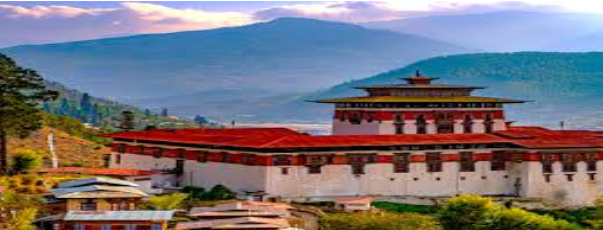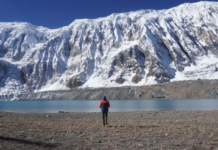The Himalayan Spiritual Journey Tour offers an immersive experience into the heart of the Himalayas, a region that has long been regarded as a sanctuary for spiritual seekers and nature lovers alike. Spanning across Nepal, Tibet, and Bhutan, this journey provides an unparalleled opportunity to explore the profound spiritual traditions that have shaped the cultures of the Himalayan region for centuries. Whether you are seeking inner peace, cultural enrichment, or a deeper connection to nature, the Himalayan Spiritual Journey Tour offers an experience that goes beyond the ordinary.
The Spiritual Essence of the Himalayas
The Himalayas, often referred to as the “Abode of Snow,” are not only the highest mountain range on Earth but also one of the most spiritually significant regions. These towering peaks have been revered by countless generations as the home of the gods. The peaceful and awe-inspiring landscape, with its snow-capped peaks, sacred rivers, and ancient monasteries, creates the perfect backdrop for spiritual exploration and enlightenment.
For centuries, the Himalayas have attracted monks, yogis, and spiritual seekers from around the world, who have come here to meditate, practice mindfulness, and seek spiritual guidance. The region is deeply rooted in the teachings of Buddhism, Hinduism, and other spiritual practices, making it a unique confluence of ancient wisdom and diverse religious traditions. The journey through Nepal, Tibet, and Bhutan brings together the spiritual richness of these regions, offering an unforgettable pilgrimage into the heart of the Himalayas.
Nepal: The Gateway to Himalayan Spirituality
Nepal, often considered the starting point of any Himalayan spiritual journey, offers a wealth of spiritual and cultural sites that have shaped the beliefs and practices of its people for centuries. The capital city, Kathmandu, is a vibrant hub of religious and spiritual activity, home to some of the most significant Hindu and Buddhist temples in the world.
The Swayambhunath Stupa, also known as the Monkey Temple, is one of the most iconic sites in Kathmandu. Perched on a hilltop, it offers breathtaking views of the city and is a key pilgrimage site for Buddhists. The stupa is adorned with hundreds of prayer flags and is a focal point for those seeking spiritual solace. Visitors often engage in prayer, meditate, and make offerings in the hopes of finding peace and enlightenment.
Another important site in Kathmandu is the Pashupatinath Temple, one of the holiest Hindu temples dedicated to Lord Shiva. This sacred temple, situated on the banks of the Bagmati River, draws pilgrims from across the world who come to perform religious rites, including cremation ceremonies. The temple complex is an important symbol of Nepal’s Hindu heritage, offering a deep and spiritual experience for those who visit.
Boudhanath Stupa is another major Buddhist pilgrimage site in Nepal. This massive stupa is one of the largest in the world and is surrounded by monasteries, making it a focal point for Buddhist prayer and meditation. The spiritual atmosphere at Boudhanath, where monks chant mantras and pilgrims circle the stupa, is powerful and conducive to inner reflection.
In addition to these spiritual sites, Nepal offers opportunities for trekking, such as the famous Everest Base Camp Trek, which not only provides a physical challenge but also a spiritual journey. The trek takes you through Sherpa villages, Buddhist monasteries, and stunning landscapes, all of which offer a sense of peace and connection to the natural world.
Tibet: The Sacred Roof of the World
A journey into Tibet takes the spiritual seeker to another level of transcendence. Often referred to as the “Roof of the World,” Tibet is home to some of the most significant Buddhist sites in the world. Tibetan Buddhism, with its deep focus on meditation, mantras, and spiritual discipline, has attracted millions of pilgrims over the centuries.
The city of Lhasa, Tibet’s capital, is considered the spiritual heart of the region. The Potala Palace, once the winter residence of the Dalai Lama, is one of Tibet’s most iconic landmarks. The palace is a majestic structure, perched on a hilltop, and is filled with religious artifacts, scriptures, and artwork that reflect Tibet’s rich spiritual heritage. Visitors to the Potala Palace often feel a deep sense of reverence and awe as they explore its chapels, halls, and murals.
The Jokhang Temple, another important site in Lhasa, is the holiest temple in Tibetan Buddhism. Pilgrims from all over Tibet and beyond make their way to the Jokhang to pay respects to the sacred Jowo Shakyamuni Buddha statue. The atmosphere around the temple is filled with chanting, prayer wheels, and the devotion of the pilgrims who circle the temple in prayer.
Outside of Lhasa, Tibet offers other sacred destinations, such as Mount Kailash, one of the most revered peaks in the world for Hindus, Buddhists, Jains, and Bonpo practitioners. The Kailash Kora, a sacred circuit around the mountain, is considered one of the most important spiritual pilgrimages in the world. Pilgrims who complete the challenging trek around Mount Kailash believe that it purges them of sin and brings them closer to enlightenment.
Tibet’s vast and serene landscapes—rugged plateaus, pristine lakes, and snow-capped mountains—serve as a backdrop for spiritual reflection. Many visitors to Tibet find that the high-altitude environment and the simple, contemplative lifestyle of its people facilitate a deep connection to inner peace and spiritual growth.
Bhutan: The Kingdom of Happiness
The final destination on the Himalayan Spiritual Journey Tour is Bhutan, a kingdom that has long emphasized the pursuit of happiness over material wealth. Bhutan’s philosophy of Gross National Happiness (GNH) prioritizes mental well-being, environmental sustainability, and spiritual growth, making it an ideal destination for those seeking a holistic spiritual experience.
Bhutan’s monasteries and temples are imbued with a sense of tranquility, and the natural beauty of the country—its lush forests, rolling hills, and towering peaks—adds to the sense of peace and serenity. The most famous spiritual site in Bhutan is the Paro Taktsang Monastery, or Tiger’s Nest Monastery, perched high on a cliff in the Paro Valley. Reaching this sacred site requires a trek, but the journey is as spiritual as the destination. The monastery is a place of pilgrimage for many Buddhists and offers stunning views of the valley below.
The Tashichho Dzong in Thimphu is another important religious site, housing the offices of Bhutan’s government and a monastery. The dzong is an architectural masterpiece, with its intricately decorated walls and peaceful courtyards. Visitors often spend time here, observing the monks in their daily rituals and soaking in the serene atmosphere.
Bhutan’s emphasis on spirituality and happiness extends to its festivals, particularly the Tshechu Festivals, which celebrate Bhutanese culture through dance, music, and religious ceremonies. These festivals are deeply spiritual events, offering visitors a chance to experience Bhutan’s living traditions.
The Transformative Power of the Himalayan Spiritual Journey Tour
The Himalayan Spiritual Journey Tour offers much more than a sightseeing experience; it is an opportunity for profound spiritual transformation. Whether you are meditating in the peaceful monasteries of Nepal, contemplating the sacred sites of Tibet, or reflecting on the meaning of happiness in Bhutan, this journey allows travelers to reconnect with their inner selves and experience spiritual growth in the most serene and awe-inspiring environment.
This tour is perfect for those who seek to deepen their spiritual practice, engage with ancient traditions, and experience the natural beauty of one of the most mystical regions on Earth. Whether you are a seasoned traveler or a first-time visitor, the Himalayan Spiritual Journey promises to be a life-changing experience that will leave you with lasting memories and a renewed sense of purpose










